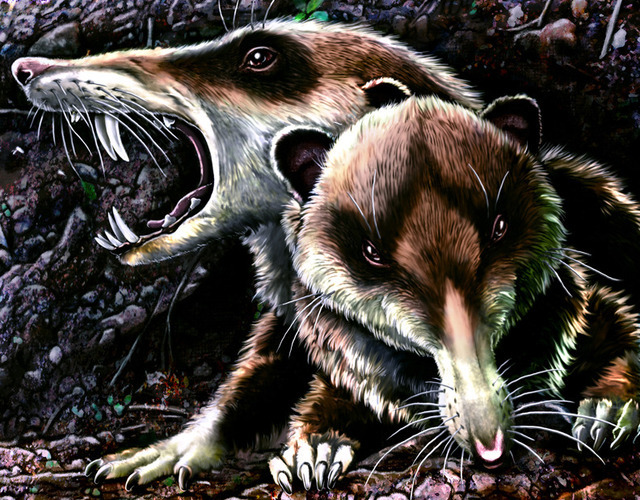
Forget saber-toothed cats; the hottest new species is the saber-toothed squirrel. Although it may seem like a figment of an animator’s imagination, this creature did actually exist (although it wasn't a squirrel), and it’s a huge finding for the mammalian fossil record.
The first known mammals lived about 220 million years ago. But we don’t know much about the mammals that existed from then until 65 million years ago, since we have very few intact skeletons from the Mesozoic era. Instead, scientists rely mainly on scattered teeth and jaw scraps to understand the earliest stages of mammalian evolution.
Now, Nature reports that paleontologists have unearthed a great find in Argentina: a pair of relatively intact skulls from a previously unknown mammal the size of a shrew. Estimated to be about 100 million years old, these skulls are beginning to fill in the giant gap in the mammalian fossil record.
The species has been named Cronopio dentiacutus, and is a member of the extinct superorder Dryolestoidea, the ancestor group to modern-day marsupials and placental mammals. Unlike other dryolestoids, however, the saber-toothed squirrel skulls are surprisingly specialized. They have very long, narrow snouts, well-developed musculature, and perhaps most interestingly, long dagger-like canines.
Cronopio is a particularly interesting find because, unlike in the northern continents, where dryolestoids represented a large part of the mammalian fauna during the Cretaceous era, there is very little evidence of these mammals in South America during the same time period. Although Cronopio is older than other South American dryolestoids, it is far more specialized. Researchers are still working to put this new find in its proper ecological and historical context.
From the skull morphology, researchers hypothesize that Cronopio’s skull was built in such a way that the jaws rotated while chewing, rather than exerting a powerful bite. Until we know more, we can’t say much else about the lifestyle of the saber-toothed squirrel.
Nature, 2011. DOI: 10.1038/nature10591 (About DOIs).
Listing image by Photograph by Artist: Jorge Gonzalez / copyright: Guillermo Rougier
reader comments
47